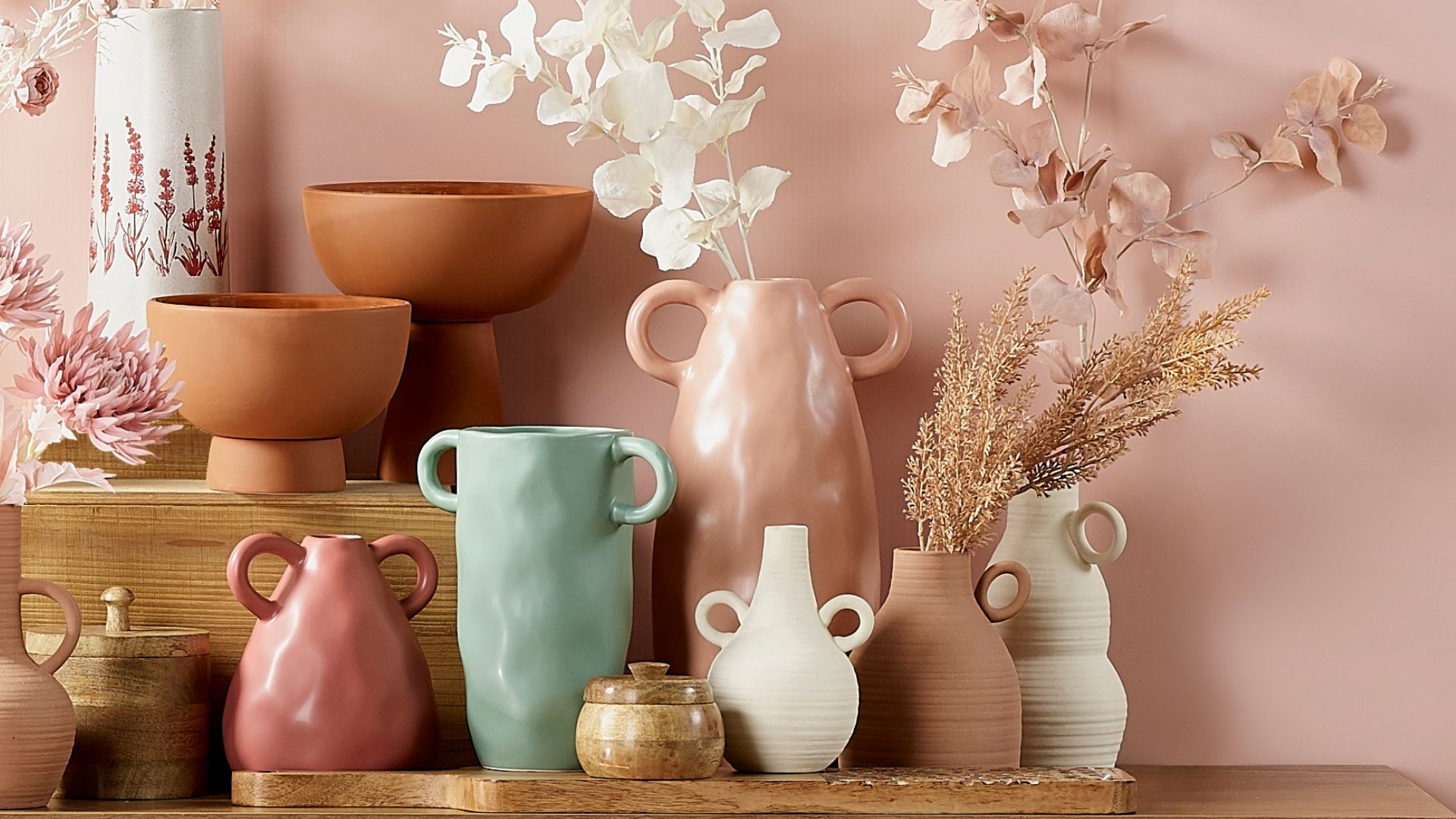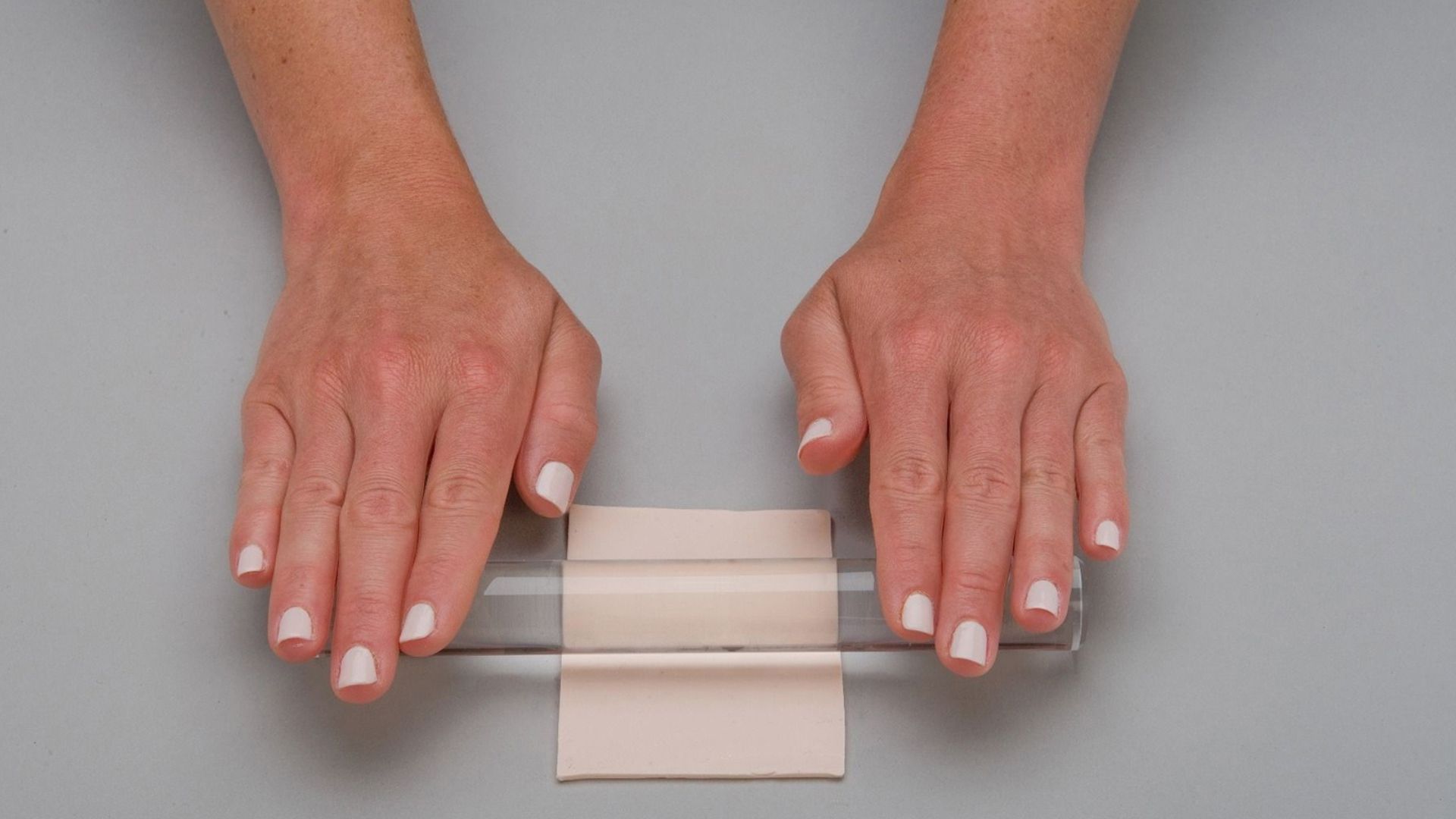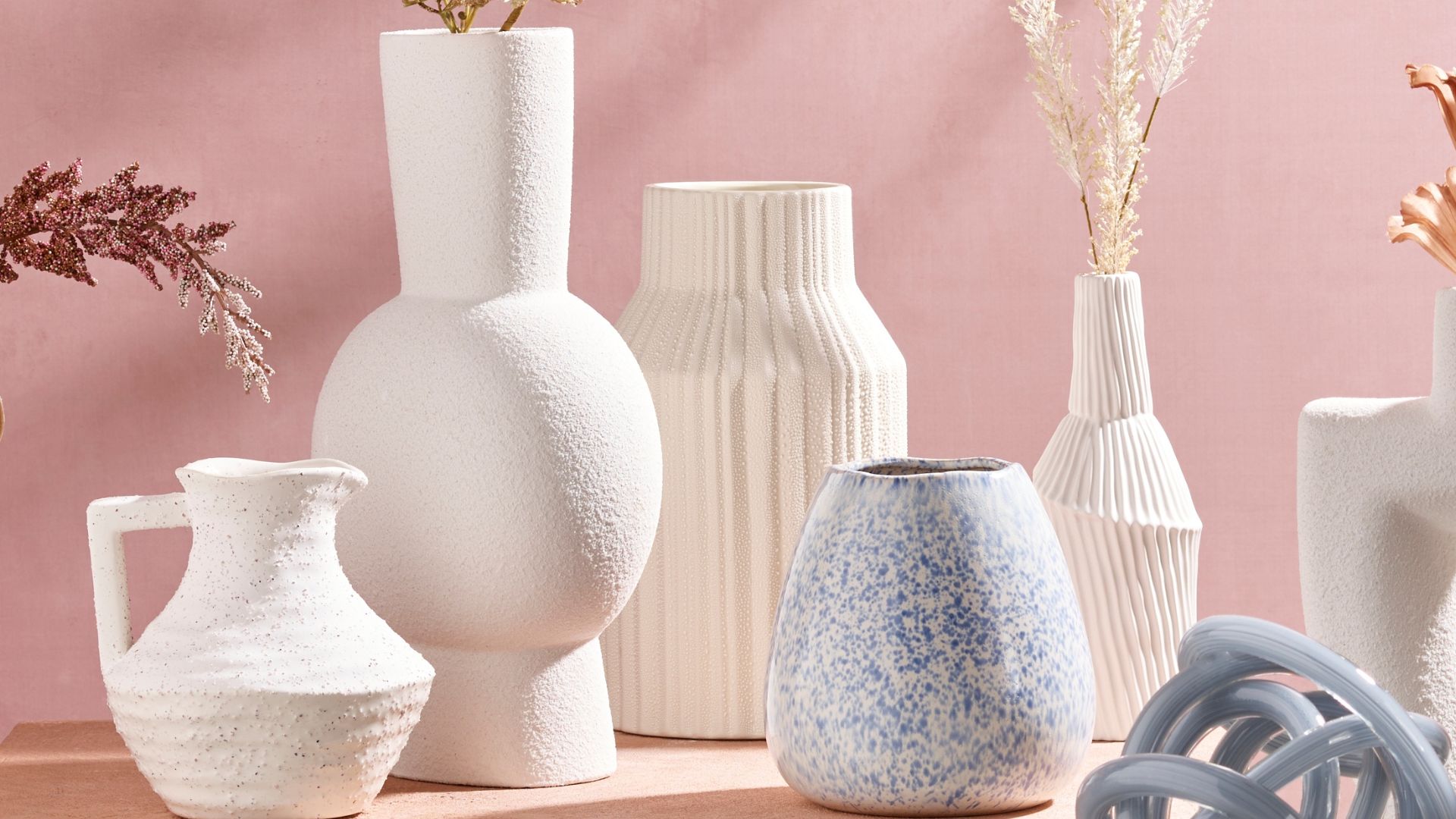 | ||
| Your browser is not supported. | ||
|
Please browse our site using any of the following options:
| ||
Making Pottery For Beginners

For a hobby that is relaxing, hands-on and ends with the creation of useful homewares and decor, look no further than the age-old art of pottery making! You can make bowls, cups, plates, jewellery and more out of clay, and when fired correctly these products will be hard, durable and amazingly coloured.
At Spotlight we have a wide range of clays and modelling tools you can use for clay pottery making, and even if you're just beginning pottery, it's not hard to learn how to use them! This guide will help you learn what you need to know, including how to start pottery at home, the different types of clay, how to shape your clay into pottery, and whether you need to fire your finished piece or not!
Quick Links
- Why Should I Start Clay Pottery Making?
- What Types Of Clay Can I Use?
- What About Air Dry & Polymer Clay?
- Three Ways To Make Pottery At Home
- What You Need To Start Making Pottery At Home
- What Is A Kiln And Do I Need One?
- Pottery Techniques & Tips For Beginners
Why Should I Start Clay Pottery Making?
Pottery is a relaxing and rewarding hobby that has a range of benefits. If you are beginning pottery, look out for rewards like:
- Strengthening your body - The gentle movements of pottery making are perfect for helping make your hands, wrists and arms stronger, and is especially beneficial for people with arthritis, as it helps promote gentle but constant movement.
- Improved focus - once you are used to the motions of pottery making, you will be able to focus your entire mentality on the physical actions of making. In turn, this helps you forget about any current stresses in your life and instead you'll drift into a comfortable 'zen' mode.
- Social interaction - as one of the oldest crafts on earth, pottery-making communities can be found all over the place. Whether at your local community art centre or online forums, there are pottery groups ready to welcome you just about everywhere! You can show off your projects, ask for advice and just chat about this wonderful hobby with many like-minded people.
- Creation of useful items - one of the best things about pottery as a hobby is you can use it to make handy things you can use at home. Dishwares such as bowls, plates and cups are some of the easiest things to make with clay, and if you fire them properly these items can be used, washed and used again every day. Clay can also be used to make larger decorative vases and pots, as well as beautiful pieces of jewellery you can wear on your person.
There are so many fun reasons to start making pottery for beginners, and it's a great hobby for beginners to start at any point in their life.
What Types Of Clay Can I Use?
When it comes to making pottery with clay, you can't just use any old clay you pull from the ground. The clay we use for making pottery comes in three classifications: earthenware, stoneware and porcelain.
- Earthenware - this is the lowest firing clay, and should be fired between 1000-1150?. Because it requires a lower temperature to fire, kilns used for it will require less energy and your electricity bill won't go up too much! Earthenware pottery must be glazed before use for food and drink, as it is more porous and can crack when heated otherwise.
- Stoneware - this clay must be fired at temperatures between 1100-1300?. It comes in lots of beautiful earthy colours, and when fired properly is dishwasher and microwave safe.
- Porcelain - the hardest clay once fired, porcelain requires temperatures between 1200-1400? when firing. Porcelain is harder to work with and more expensive but creates stunning pieces that are great to decorate and sell. Porcelain can even be translucent!
Unless you want a real challenge straight off the bat, beginners should start clay pottery making with earthenware or stoneware instead of porcelain.
What About Air Dry & Polymer Clay?
We have only talked about natural pottery clay, but there are other clays on the market that are easy to manipulate and don't need a kiln to dry solid: air dry and polymer clay. How do these variations differ from natural pottery clay?
- Air dry clay is made from a mixture of natural and synthetic materials and doesn't need to be conditioned before use, so you can get straight into moulding it. It is an affordable clay that doesn't need a kiln or any special actions for it to dry - simply place it somewhere cool, dry and ventilated and it will be ready in a few days. Once dry, you'll want to seal your project to make it more durable and waterproof if needed. You can paint it with acrylic paint or use an acrylic sealer for the job.
- Polymer clay is made from plastic and is colourful, easy to use and extremely versatile. It does have to be fired, but because the firing temperature is so low (around 135?) you can pop it in your own oven and have it hardened in around 15 minutes. Once done it will be solid, durable and waterproof - no extra sealants are required! Polymer clay should not be used to make things you will eat off, however, as it is not safe to ingest.
These clays are great fun to work with and ideal if you want to dip your toes into clay modelling, But if you are looking to make things that are suitable for eating off and that are super durable, kiln-fired pottery clay has superior durability and is safe to eat off when glazed correctly. Neither air dry nor polymer clay has these two properties, and so should only be used for making decor or jewellery.

Three Ways To Make Pottery At Home
When it comes to making pottery at home, there are three ways you can do it. Each way produces quality pieces of pottery, so the method you choose is entirely up to you!
- Hand-make your pottery - this simple method requires the least amount of tools and equipment, and creates pieces that are one-of-a-kind every time. There are many hand-building techniques out there, such as rolling your clay into slabs and then joining them, pinching a ball of clay into a cup, or creating coils, stacking them on each other and then smoothing them out. You can use any utensils you want to create details in your pottery, but really you need nothing more than the clay itself and a tool to cut it with!
- Use a pottery wheel - using a pottery wheel to spin your clay into shape is called 'throwing', and a pottery wheel allows you to make all sorts of smooth, rounded pottery shapes such as vases, bowls, mugs and other vessels. There is a huge range of pottery wheels out there, with plenty of inexpensive options for beginners if you want to try one out. You can also use cutting and carving tools to decorate your pottery as your spin it on the wheel.
- Slip casting - mix clay with enough water and it becomes a runny substance called 'slip'. The slip can be poured into a reusable plaster mould, where it dries and can then be popped out. Slip casting can be used to make identical pieces, so it's handy if you want to create a matching collection you can sell. You can even make your own moulds for truly unique pottery pieces!
Each clay pottery making method is suitable for beginners, although you may want to start with handmaking just so you can get a feel for how clay works in your hands.
What You Need To Start Making Pottery At Home
Ready to start clay pottery making at home? Here are the basics you'll need:
- Your choice of clay
- A pottery wheel (for method 2)
- Plaster mould (for method 3)
- Casting slip (for method 3 if you don't want to make your own)
- A kiln, or access to one
- Pottery carving and detailing tools
Tools include a cutting wire, rolling pin, sponge on a stick, rib tool and a modelling instrument like a spoon or stick. You can buy a starter set or tool pack which will contain a good selection of tools, or buy them individually if you want to pick and choose what tools you have.
You will want a cool, indoor space for your pottery making, Keep in mind you will get dirty making clay, so place down a protective tarp if you're worried about your floor and wear old, easy-to-wash clothing while you work.
What Is A Kiln And Do I Need One?
You'll hear the term 'kiln' mentioned a lot when we talk about making clay pottery, but what is a kiln and do you really always need one?
A kiln is what you will need to use to fire (or 'bake') your pottery once you have finished making it. A kiln is like a special oven for clay - you will need to use one for firing, as conventional ovens don't get hot enough. In fact, because they do get so hot, kilns need to be kept in special areas of your home that can withstand the heat they produce.
As a beginner, you may not wish to invest in a kiln straight away, but you will still need to fire most of your pottery if you want them to have any durability. Art centres will have a kiln you maybe be able to hire, where can drop off your pottery to be fired and pick it up once it is finished. If you dive into your local pottery community, you may also be lucky enough to find someone nearby who will let you use their personal kiln for your own projects.
Otherwise, if you decide to buy your own kiln you'll have a lot of things you need to keep in mind.
A kiln takes up quite a bit of space, can be a drain on your electricity and require ventilation to be used safely. You'll want a space that is protected from the weather, has plenty of airflow and has power access (an electric kiln is easier and safer to use than a wood or gas-powered one). If you have all of these requirements and are ready to invest in pottery making, then buying your own kiln is a solid idea!
Pottery Techniques & Tips For Beginners
It can be daunting to start making your first clay pottery project, but here are some tips and tricks to try that will help set your mind at ease!
- Rework ruined pieces - the good thing about pottery is that, as long as it hasn't been fired, you can rework and reuse any pieces you have no matter how much shaping and work have gone into them. You may need to add a little water, but feel free to squish down and rework any pieces you're not happy with as you go.
- Keep good posture - it can be easy to find yourself hunching over your clay as you knead it or spin it on a pottery wheel, but keeping good posture is important to ensure you don't damage your back, neck and arms in the long term. Make sure to keep your back straight, your neck in a neutral position and your arms in at your sides, and be sure to take breaks by walking around if you are working for an extended period of time.
- Wedge your clay - wedding pottery clay is like kneading dough, and the action is quite similar. Wedging your pottery clay before shaping it is essential, as it makes it more pliable and gets rid of any air inside the clay, which, if left in, can cause your clay to explode when it is fired in a kiln.
- Decorate between firings - while the natural colour of clay is beautiful as is, pottery can also be decorated and coloured in a number of fun ways. Before you fire your pottery for the first time it is known as 'greenware', and this is the time to add carved patterns and decorations, an underglaze or some decorative slip. If you want to add a decorative or protective glaze, you can do this after your second 'bisque' fire and before the last 'glazing' fire.
- Wrap spare pottery - any clay that you are not actively or about to use should be wrapped in cling wrap and stored away to keep it pliant and usable. Clay that is left out but not used may begin to harden, and you don't want to waste any of your clay and then have to rework it later!
We hope these handy tips make beginning pottery making a smooth process. Easy pottery ideas for beginners include a simple teacup, a small bowl or even a slender vase. Over time you'll discover your own tips and tricks for making pottery, but we hope these help you on your way to becoming an expert potter!

Start Your First Pottery Project With Spotlight!
Are you ready to start making pottery at home? You can find a great range of clays and modelling tools right here at Spotlight, both online for home delivery and at your nearest Spotlight store.
Why not start simple with this handmade clay jewellery project? Or check out our craft projects for other fun ideas anyone can try.




